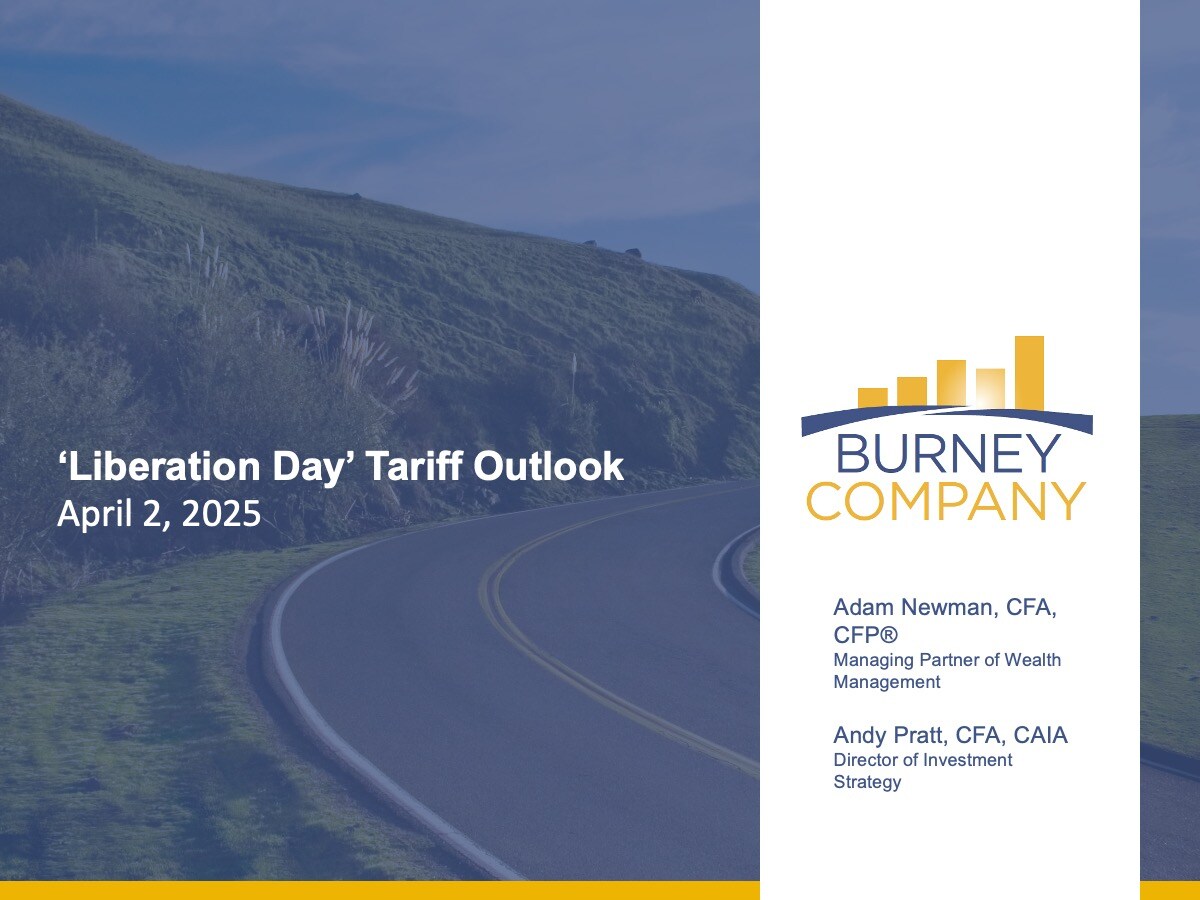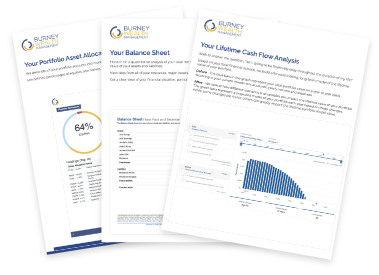Recent Market Volatility & Reaction to Tariffs [Webinar Summary]

Presenters: Andy Pratt, CFA and Adam Newman, CFA, CFP®, MT, RICP®
Here is the webinar recording from April 3rd, 2025. You can browse the topics discussed and the main takeaways using the sections and time stamps below:
Click the time stamp in each section title, and you will jump right to that part of the video on a new screen.
01:12 - Historical Context for Tariff Negotiations
03:09 - 'Liberation Day' Tariff Announcement
04:47 - Understanding Tariffs
08:22 - Trump's Intentions with Tariffs
12:46 - Tariffs vs. Inflation
15:35 - Economic Impact of Tariffs
18:27 - Federal Reserve Response
21:30 - Market Reaction to Tariffs
24:39 - Historical Market Response to Major Events
26:29 - Volatility in Bull Markets
28:36 - How We React to Market Volatility
36:35 - Client Opportunities During Volatility
42:00 - Q&A Session
Historical Context for Tariff Negotiations (01:12)
- 2018-2019 Border Wall negotiation - 35-day government shutdown used as leverage for funding
- 2018-2020 NAFTA replacement - "worst trade deal ever" threats used to bring Canada and Mexico to the negotiating table
- 2018-2020 China Trade War - tariffs used as leverage, resulted in Phase One trade deal in 2020
- Pattern of using "shock and awe" announcements as a negotiation strategy
'Liberation Day' Tariff Announcement (03:09)
- New tariffs announced include 10% flat tariff across all imports
- Additional tariffs on net exporters
- Market had expected some tariffs but was surprised by the scope
- Trump indicated tariffs could be reduced if countries remove trade barriers
- Current uncertainty about final implementation and outcomes
Understanding Tariffs (04:47)
- Tariffs are taxes on imported or exported goods
- Example: $12 foreign shirt with 25% tariff costs $15 when imported to US
- Tariffs are paid by the importer, not the exporting country
- Companies then decide whether to absorb costs or pass them to consumers
- Goal is to make domestic goods more competitive relative to imports
Trump's Intentions with Tariffs (08:22)
- Three main goals outlined:
- Economic independence - reshoring manufacturing to the US
- Revenue generation - potentially to offset tax cuts or reduce deficit
- Removing barriers to entry - making US companies more competitive overseas
- Debate about whether this approach will follow historical pattern of negotiation or represent a more permanent policy shift
Tariffs vs. Inflation (12:46)
- Tariffs create one-off price shocks to specific goods
- Different from structural inflation seen in 2022
- Example from previous tariffs: laundry equipment saw initial price spike but then declined as competitive dynamics adjusted
- Federal Reserve views tariff-induced price increases differently than broader inflation
Economic Impact of Tariffs (15:35)
- Tariffs alone don't typically cause a recession
- However, uncertainty can impact business and consumer behavior
- Current economic backdrop remains strong despite slowing
- Labor market, profit margins, and retail spending remain positive
- Question remains whether this will be a short-lived negotiation or a longer-term policy
Federal Reserve Response (18:27)
- Fed has dual mandate: full employment and price stability
- Fed Chair Powell has indicated they won't overreact to tariff-induced inflation
- Will distinguish between structural inflation and one-time price shocks
- Focus remains on long-term inflation trends rather than temporary tariff impacts
Market Reaction to Tariffs (21:30)
- S&P 500 down 4%, NASDAQ down 5%, Russell 2000 down 6% on announcement day
- Asian and European markets also fell
- Market surprised by the scale of tariff announcements
- VIX (volatility index) elevated but not as high as might be expected given the sell-off
Historical Market Response to Major Events (24:39)
- Average S&P 500 return one year after major geopolitical events: +14.25%
- Examples include Korean War, Cuban Missile Crisis, Gulf War, 9/11, Brexit, COVID
- 2018 China tariff situation saw a V-shaped recovery after initial 20% selloff
- Markets tend to anchor to corporate profits and earnings over time
Volatility in Bull Markets (26:29)
- 5% pullbacks are normal and frequent in bull markets
- Historical data shows most bull markets experience multiple 5-10% corrections
- About 80% of 10% corrections do not turn into bear markets (20%+ declines)
- Volatility is the price investors pay to achieve long-term equity returns
How We React to Market Volatility (28:36)
- Two main approaches were discussed:
- Asset allocation strategies - balancing stocks, bonds, and alternatives based on risk tolerance and goals
- US equity strategy - focusing on quality stocks and adjusting style/size factors
- Market volatility often creates opportunities for stock selection
- Recent shift from 60/40 growth/value split to 50/50 split in response to changing market dynamics
- Increased allocation to large caps (80/20 large to small) due to small-cap weakness
Client Opportunities During Volatility (36:35)
- Market pullbacks create buying opportunities for cash on the sidelines
- Time to reassess risk tolerance if current volatility is causing stress
- Good opportunity to review financial plans and ensure proper asset allocation
- Reminder that most corrections don't turn into bear markets
- Importance of staying invested for long-term goals
Q&A Session (42:00)
- Duration of market downtrend - no precise prediction but corrections typically don't last long
- Impact on style shifts - moving from 60/40 growth/value to 50/50 as value stocks show better resilience
- Understanding tariff revenue - importers pay tariffs and either absorb costs or pass them to consumers
- Protective nature of stock selection - quality and value factors typically provide some downside protection
- Investing cash reserves - generally a good opportunity if the time horizon is 5+ years
The next quarterly webinar is scheduled for April 16th at 12:30 PM Eastern time, where the team will provide further updates on market conditions and investment strategies.
The Burney Company is an SEC-registered investment adviser. Burney Wealth Management is a division of the Burney Company. Registration with the SEC or any state securities authority does not imply that Burney Company or any of its principals or employees possesses a particular level of skill or training in the investment advisory business or any other business. Burney Company does not provide legal, tax, or accounting advice, but offers it through third parties. Before making any financial decisions, clients should consult their legal and/or tax advisors.




